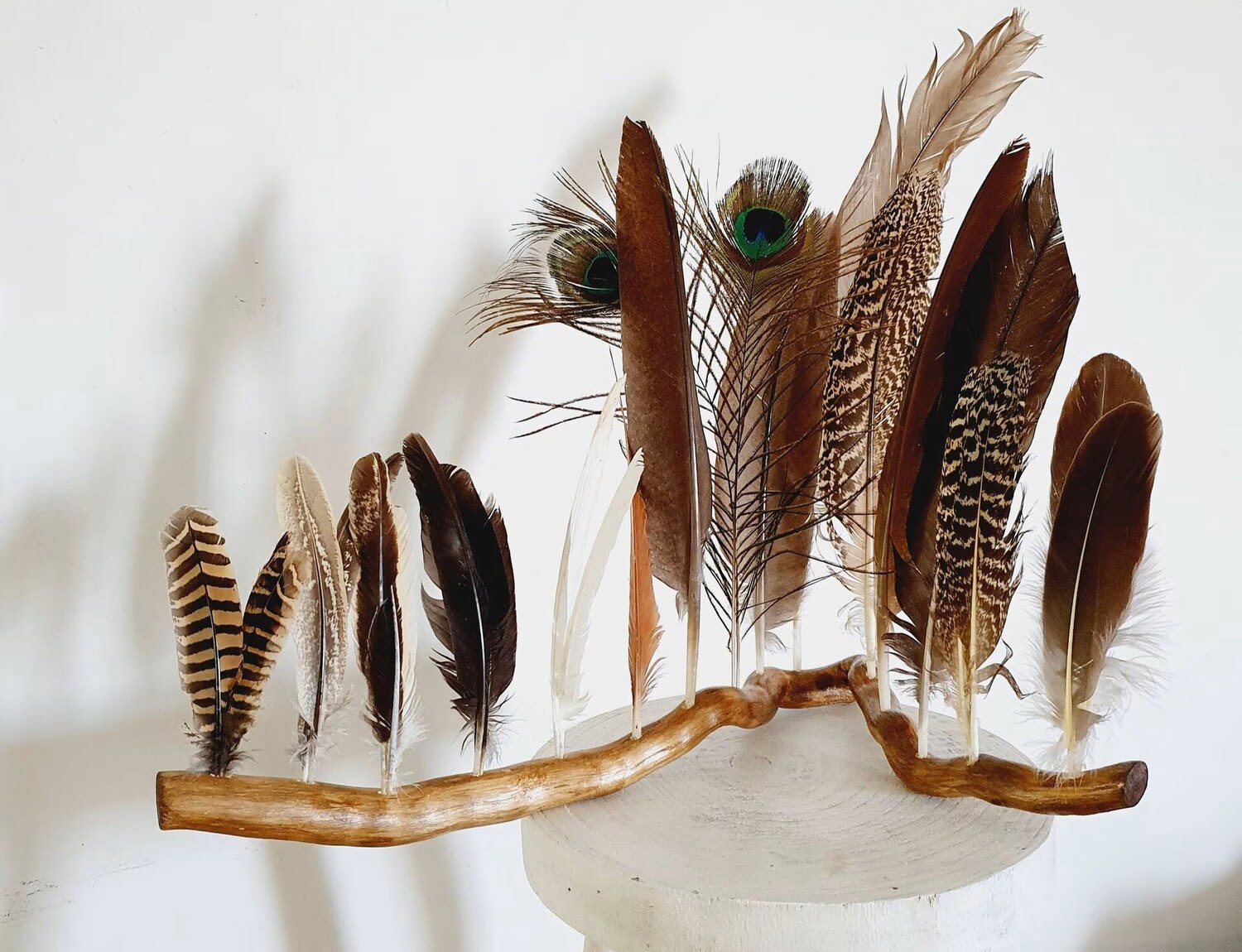

Articles
How To Store Feathers
Modified: January 18, 2024
Learn the best techniques for storing articles made of feathers to ensure their longevity and prevent damage. Safely preserve and protect your feathered treasures!
(Many of the links in this article redirect to a specific reviewed product. Your purchase of these products through affiliate links helps to generate commission for Storables.com, at no extra cost. Learn more)
Introduction
Welcome to the world of feathers! Feathers are not just unique and beautiful, but they also hold significant cultural and historical value. Whether you are a collector, artist, or simply someone who appreciates the elegance of feathers, it is essential to know how to store them properly to maintain their condition and longevity.
Feathers come in various shapes, sizes, and colors, and each is a delicate work of art in itself. However, due to their fragile nature and susceptibility to damage, it is crucial to handle them with care and provide them with a suitable storage environment.
In this article, we will guide you through the process of storing feathers effectively, ensuring their preservation and protection. We will explore the importance of understanding the nature of feathers, preparing them for storage, choosing the right storage container, creating an ideal storage environment, protecting them from pests and insects, avoiding common storage mistakes, maintaining and cleaning stored feathers, and even displaying them for others to admire.
So, if you have a collection of feathers or are planning to start one, let’s dive in and learn how to store feathers properly so that you can enjoy their beauty for years to come.
Key Takeaways:
- Preserve the delicate beauty of feathers by understanding their nature, preparing them for storage, choosing the right container, and creating an ideal storage environment. Avoid common mistakes and display them creatively to share their elegance with others.
- Safeguard your feather collection from pests and damage by freezing, using natural repellents, and maintaining cleanliness. Regularly inspect, clean, and display feathers to celebrate their beauty and ensure their longevity.
Read more: How To Clean Feather Cushions
Understanding the Nature of Feathers
Before we delve into the art of storing feathers, it is important to understand their unique nature. Feathers are not just mere decorative elements; they serve a crucial purpose for birds, providing insulation, aiding in flight, and even attracting mates. By understanding their natural properties, we can better appreciate the care they require during storage.
Feathers are composed of a central shaft called the rachis, which extends outward into barbs. These barbs further split into smaller barbules, giving the feather its intricate structure. The barbules are held together by tiny hook-like structures called barbicels, creating a cohesive and flexible wing surface.
Feathers are not static objects; they are designed to move and flex. This means that storing them in a rigid or compacted state can result in damage. It is essential to allow them some flexibility and space to prevent breakage or deformation.
Additionally, feathers are sensitive to light, heat, humidity, and pests. Exposure to prolonged sunlight or moisture can cause fading, warping, and even mold growth. Furthermore, pests such as moths and beetles are attracted to feathers and can cause irreparable damage if not properly protected.
By understanding the delicate structure and vulnerability of feathers, we can take the necessary steps to preserve and protect them during storage. Let’s explore how to prepare feathers for storage in the next section.
Preparing Feathers for Storage
Properly preparing feathers for storage is a crucial step in ensuring their long-term preservation. This process involves gentle cleaning and inspection to remove any dirt, debris, or pests that may be present.
The first step is to handle feathers with clean and dry hands. This prevents any natural oils or moisture from your skin transferring onto the feathers, which can attract dirt and potentially damage them over time. If necessary, wear thin cotton gloves to minimize direct contact.
Start by inspecting each feather individually. Look for signs of damage such as broken barbs or loose barbules. If you come across any damaged feathers, consider repairing them before storage. You can gently trim any loose or frayed barbs using small, sharp scissors. Secure any loose barbules by carefully applying a tiny amount of clear adhesive.
Next, remove any visible dirt or debris from the feathers by gently shaking them or using a soft brush, such as a clean, dry paintbrush or a makeup brush. Avoid using water or cleaning solutions unless absolutely necessary, as excess moisture can cause feathers to warp or mold.
If you suspect the feathers may have pests such as moths or beetles, you can freeze them for a few days to kill any potential larvae or eggs. Place the feathers in a sealed plastic bag and place them in the freezer for at least 48 hours. Freezing is a safe and effective method for pest control, as it does not harm the feathers.
Once the feathers are clean and inspected, it is time to move on to choosing the right storage container. We will discuss this in detail in the next section.
Choosing the Right Storage Container
When it comes to storing feathers, choosing the right container is essential to protect them from external elements and potential damage. The ideal container should provide enough space for the feathers to breathe, while also offering protection against pests, moisture, and light.
First and foremost, avoid using plastic bags or containers made of PVC or vinyl. These materials can emit harmful chemicals that may deteriorate or discolor the feathers over time. Instead, opt for acid-free archival boxes or containers made of materials such as acid-free cardboard, glass, or metal. These materials are safe for long-term feather storage.
Size matters when selecting a storage container. Ensure that the container is large enough to hold the feathers without compressing or folding them. Feather shafts can easily become brittle and break if they are forced into a small space.
Consider using dividers or compartments within the container to keep different types or sizes of feathers separate. This prevents feathers from rubbing against each other, which can lead to damage or fraying of the delicate barbs.
If you have particularly fragile or valuable feathers, it may be beneficial to individually wrap them in acid-free tissue paper or archival sleeves before placing them in the storage container. This provides an extra layer of protection against light and potential abrasion.
Labeling the storage container is also important for organization and easy retrieval. Use archival-quality labels that will not cause damage to the container or feathers. Include information such as the species, date collected, and any specific details about the feathers to aid in identification and documentation.
Now that you have chosen the appropriate storage container, let’s move on to creating an ideal storage environment to ensure the longevity of the feathers. We will explore this topic in the next section.
Creating an Ideal Storage Environment
The environment in which feathers are stored plays a vital role in their long-term preservation. Creating an ideal storage environment involves managing temperature, humidity, and light exposure to minimize damage and deterioration.
First and foremost, it is crucial to store feathers in a cool and dry place. Excessive heat and humidity can cause feathers to warp, mold, or decay. Ideally, the temperature should be around 60-70 degrees Fahrenheit (15-21 degrees Celsius) with a relative humidity of 40-50%. Avoid storing feathers in basements, attics, or any area prone to extreme temperature fluctuations or high humidity levels.
Light exposure can fade and discolor feathers over time. Therefore, it is advisable to store feathers in a dark or low-light environment. If possible, choose a storage area away from direct sunlight or artificial light sources. If natural light is present, consider using UV-resistant window coverings or storing the feathers in opaque containers to prevent UV damage.
Air circulation is important to prevent the buildup of stagnant, humid air. Avoid storing feathers in airtight containers, as this can trap moisture and promote mold growth. Instead, choose a storage area that allows for some airflow, or consider using desiccant packs or silica gel packets to help absorb excess moisture.
In addition to managing the storage environment, it is important to protect feathers from pests and insects. We will discuss this in detail in the next section.
By creating an ideal storage environment, you can ensure that your feathers remain in the best possible condition for years to come. In the next section, we will explore specific strategies for storing feathers in a cool and dry place.
Read more: How To Clean A Feather Duster
Storing Feathers in a Cool and Dry Place
One of the key factors in preserving feathers is storing them in a cool and dry environment. Proper temperature and humidity control can prevent damage such as warping, mold growth, and decay. Here are some strategies for storing feathers in a cool and dry place:
1. Find a suitable storage area: Choose a location in your home that maintains a relatively stable temperature and low humidity. Avoid areas like basements, attics, or rooms with high moisture levels.
2. Utilize climate control: If possible, store your feathers in a room with air conditioning or heating to maintain a consistent temperature. This will help prevent fluctuations that can cause damage.
3. Use insulation: Insulate the storage area to protect it from external temperature variations. Proper insulation helps maintain a stable environment for your feathers.
4. Consider a dehumidifier or humidifier: Depending on your geographic location, you may need to reduce or increase the humidity levels in the storage area. A dehumidifier can remove excess moisture, while a humidifier can help maintain an optimal level of humidity.
5. Control ventilation: Ensure that the storage area is well-ventilated to allow for proper airflow. This helps prevent the buildup of stagnant air and reduces the risk of mold or mildew growth.
6. Monitor temperature and humidity: Use a digital thermometer and hygrometer to regularly monitor the temperature and humidity levels in the storage area. Make adjustments as necessary to maintain the recommended range for feather preservation.
7. Avoid direct sunlight: Sunlight can fade and degrade feathers over time. Keep your storage area away from windows or use blackout curtains to protect the feathers from harmful UV rays.
8. Use desiccants or silica gel: Place desiccant packs or silica gel packets near your stored feathers to absorb any excess moisture that may be present. This helps maintain a dry environment and prevents mold growth.
By following these strategies and storing your feathers in a cool and dry place, you can prolong their lifespan and preserve their natural beauty. In the next section, we will discuss protecting feathers from pests and insects.
Store feathers in a cool, dry place away from direct sunlight to prevent fading and deterioration. Use acid-free tissue paper or a breathable storage container to protect them from dust and pests.
Protecting Feathers from Pests and Insects
Pests and insects can pose a significant threat to feathers, causing damage and deterioration if not properly protected. To safeguard your feather collection, it is important to take preventive measures to keep pests at bay. Here are some effective strategies:
1. Clean and inspect feathers thoroughly: Before storing feathers, ensure they are free from any pests or insects. Carefully inspect each feather for signs of infestation, such as small holes or webbing. If you notice any pests, take appropriate action to eliminate them before storing the feathers.
2. Freeze feathers before storage: To kill any potential pests or eggs that may be present, place the feathers in a sealed plastic bag and freeze them for at least 48 hours. Freezing is a safe and effective method for pest control, as it does not harm the feathers.
3. Use pest repellents: Consider placing natural pest repellents, such as lavender sachets, cedar chips, or dried citrus peels, near your stored feathers. These scents are known to repel pests and deter them from infesting your collection.
4. Avoid using mothballs: Although mothballs are commonly used as a pest deterrent, they can emit harmful chemicals and leave behind unpleasant odors. It is best to avoid using mothballs near your feathers, as they can potentially damage or contaminate them.
5. Maintain cleanliness in the storage area: Regularly clean the storage area surrounding your feathers to prevent the presence of crumbs, dust, or any other potential attractants for pests and insects. Vacuum or sweep the area regularly, and avoid storing feathers near food or other organic materials that may entice pests.
6. Regularly inspect stored feathers: Periodically check on your stored feathers to ensure there are no signs of pest or insect activity. Look for any visible damage, webbing, or droppings. If you suspect an infestation, take immediate action to address the issue before it spreads to other feathers.
7. Consider professional pest control services: If you are dealing with a severe pest infestation or are unsure how to handle the situation effectively, it may be advisable to consult with professional pest control services. They can assess the situation and provide appropriate treatment options to eradicate the problem safely.
By implementing these protective measures, you can minimize the risk of pest and insect damage to your feather collection. In the next section, we will discuss common mistakes to avoid when storing feathers.
Avoiding Common Mistakes in Feather Storage
When it comes to storing feathers, there are certain common mistakes that can lead to damage and deterioration. By being aware of these mistakes and taking preventative measures, you can ensure the long-term preservation of your feather collection. Here are some common mistakes to avoid:
1. Using improper storage materials: Avoid using plastic bags or containers made of PVC or vinyl. These materials can emit harmful chemicals and lead to damage or discoloration over time. Instead, opt for acid-free archival boxes or containers made of materials such as acid-free cardboard, glass, or metal.
2. Overcrowding the storage container: It is important to give feathers enough space to breathe and prevent them from getting crushed or damaged. Overcrowding a storage container can lead to warping, breakage, or distortion of the feathers. Use dividers or compartments to keep different types or sizes of feathers separate and prevent them from rubbing against each other.
3. Ignoring temperature and humidity control: Feathers are sensitive to fluctuations in temperature and humidity. Keeping them in an environment with extreme heat, cold, or high humidity levels can cause warping, mold, or decay. Maintain a cool and dry storage area with regulated temperature and humidity levels to ensure the feathers’ longevity.
4. Exposing feathers to sunlight: UV rays from sunlight can fade and deteriorate feathers over time. Avoid storing feathers in areas with direct sunlight or prolonged exposure to artificial light sources. If necessary, protect the feathers by using UV-resistant window coverings or storing them in opaque containers.
5. Neglecting regular inspections: It is important to periodically check on your stored feathers to ensure they are free from damage, pests, or signs of deterioration. Regular inspections give you the opportunity to take immediate action if any issues arise and prevent further damage to the collection.
6. Using inappropriate cleaning methods: Feathers should be handled with care and cleaned using gentle methods. Avoid using water or cleaning solutions unless absolutely necessary, as excess moisture can cause feathers to warp, mold, or decay. Instead, use dry brushing or gentle shaking to remove any visible dirt or debris.
7. Lack of pest control measures: Pests, such as moths and beetles, are attracted to feathers and can cause irreparable damage if not properly addressed. Taking preventive measures, such as freezing feathers before storage, using natural pest repellents, and maintaining cleanliness in the storage area, can help safeguard your feathers from pest infestations.
By avoiding these common mistakes and implementing proper storage techniques, you can ensure the preservation and longevity of your feather collection. In the next section, we will discuss the importance of maintaining and cleaning stored feathers.
Maintaining and Cleaning Stored Feathers
Maintaining and cleaning stored feathers is an important aspect of their long-term preservation. While feathers are naturally self-cleaning, regular maintenance and occasional cleaning can help keep them in optimal condition. Here are some tips for maintaining and cleaning stored feathers:
1. Handling with care: When handling stored feathers, always use clean and dry hands or wear thin cotton gloves to minimize direct contact. Avoid applying excessive pressure to the feathers, as this can cause breakage or deformation.
2. Regular inspections: Periodically inspect your stored feathers to ensure they remain in good condition. Look for any signs of damage, such as broken barbs or loose barbules, as well as any signs of pests or insect infestations. Promptly address any issues to prevent further damage.
3. Gentle cleaning methods: Feather cleaning should be done with utmost care to avoid damage. Avoid using water or cleaning solutions unless absolutely necessary. Instead, use a soft brush, such as a clean, dry paintbrush or a makeup brush, to gently remove any dust or debris from the feathers. Avoid excessive brushing, as this can cause the feathers to lose their natural oils and become brittle.
4. Spot cleaning: If you notice a specific area on a feather that requires cleaning, you can use a damp cotton swab or cloth dipped in a mild soap solution. Gently dab the affected area, being careful not to saturate the feather with excessive moisture. After spot cleaning, use a clean, damp cloth to remove any soap residue, and allow the feather to air dry thoroughly before returning it to storage.
5. Avoiding wet cleaning: Generally, wet cleaning of feathers should be avoided, as it can cause the feathers to clump, lose their natural oils, or become misshapen. If a feather requires deeper cleaning, seek the assistance of a professional conservator or specialist with experience in feather cleaning.
6. Maintaining storage conditions: Ensure that the storage environment remains cool and dry, with regulated temperature and humidity levels. Regularly monitor and adjust as necessary to prevent moisture buildup, mold growth, or other forms of damage.
7. Avoiding direct handling: Minimize unnecessary handling of stored feathers to reduce the risk of accidental damage. When displaying or showcasing feathers, use protective frames, shadow boxes or display cases to prevent direct contact.
By following these maintenance and cleaning practices, you can help preserve the beauty and integrity of your feather collection for years to come. In the next section, we will explore different ways to display stored feathers.
Read more: How Feather Pillows Are Made
Displaying Stored Feathers
Feathers are not just meant to be stored away; they are works of art that deserve to be showcased and admired. When it comes to displaying your stored feathers, there are several creative and visually appealing options to consider. Here are some ideas to help you showcase your collection:
1. Shadow boxes: Shadow boxes are a popular choice for displaying feathers. These deep, framed cases allow you to arrange and showcase the feathers in an organized and visually pleasing manner. You can position the feathers on a background of your choice, and some shadow boxes even come with glass tops to protect against dust and damage.
2. Frames and mats: Consider framing individual feathers or a selected group with a complementary mat and frame. This method allows you to highlight the unique characteristics and colors of each feather while providing an elegant and professional presentation.
3. Floating frames: Floating frames are a modern and minimalist option that creates the illusion of your feathers suspended in the air. The transparent backing allows for a striking and delicate display, emphasizing the intricate details of the feathers.
4. Curio cabinets or display cases: Utilize glass-fronted curio cabinets or display cases to create a dedicated space for your feather collection. These cabinets provide a secure and dust-free environment while allowing you to arrange the feathers in an aesthetically pleasing manner. Consider adding background lighting to enhance the visual impact of your display.
5. Hanging mobiles: Create a dynamic and eye-catching display by suspending feathers from a hanging mobile. Use fishing line or transparent thread to hang feathers at varying heights, creating movement and capturing attention as they gently sway.
6. DIY nature-inspired artwork: Get creative and use your stored feathers to create your own artwork. Arrange them on a canvas or wooden board, attach them to a wreath, or incorporate them into a mixed media collage. Let your imagination run wild and create a unique and personalized display that reflects your style and creativity.
7. Nature-inspired centerpieces: Use feathers as a centerpiece for a decorative arrangement. Place them in a clear vase or display them alongside dried flowers, branches, or other natural elements. This provides an elegant and nature-inspired focal point for your home or special event.
Remember to position your display away from direct sunlight or excessive heat to protect the feathers from potential damage. Also, periodically check on your displayed feathers to ensure they remain in good condition and make any necessary adjustments or cleaning.
With these creative display ideas, you can showcase your stored feathers in a way that celebrates their beauty and captivates viewers. In the next section, we will conclude our guide on storing feathers and offer final thoughts.
Conclusion
Storing feathers is an art in itself, requiring knowledge, care, and attention to detail. By understanding the unique nature of feathers, preparing them properly, choosing the right storage container, creating an ideal storage environment, and protecting them from pests and insects, you can ensure the longevity and preservation of your feather collection.
Proper maintenance and cleaning are essential for keeping stored feathers in optimal condition. Regular inspections, gentle cleaning methods, and adherence to storage conditions will help safeguard your feathers from damage and deterioration. Displaying your stored feathers allows you to share their beauty with others and adds a touch of elegance and creativity to any space.
Throughout this guide, we have provided valuable insights and techniques for storing feathers, including avoiding common mistakes and implementing best practices. Remember to handle feathers with care, provide them with a suitable storage environment, and periodically assess their condition to address any issues promptly.
Whether you are a feather enthusiast, collector, or artist, proper feather storage ensures that these delicate and exquisite creations remain a source of fascination and inspiration for years to come. So go ahead, dive into the world of feathers, and revel in the beauty and wonder they bring.
Frequently Asked Questions about How To Store Feathers
Was this page helpful?
At Storables.com, we guarantee accurate and reliable information. Our content, validated by Expert Board Contributors, is crafted following stringent Editorial Policies. We're committed to providing you with well-researched, expert-backed insights for all your informational needs.
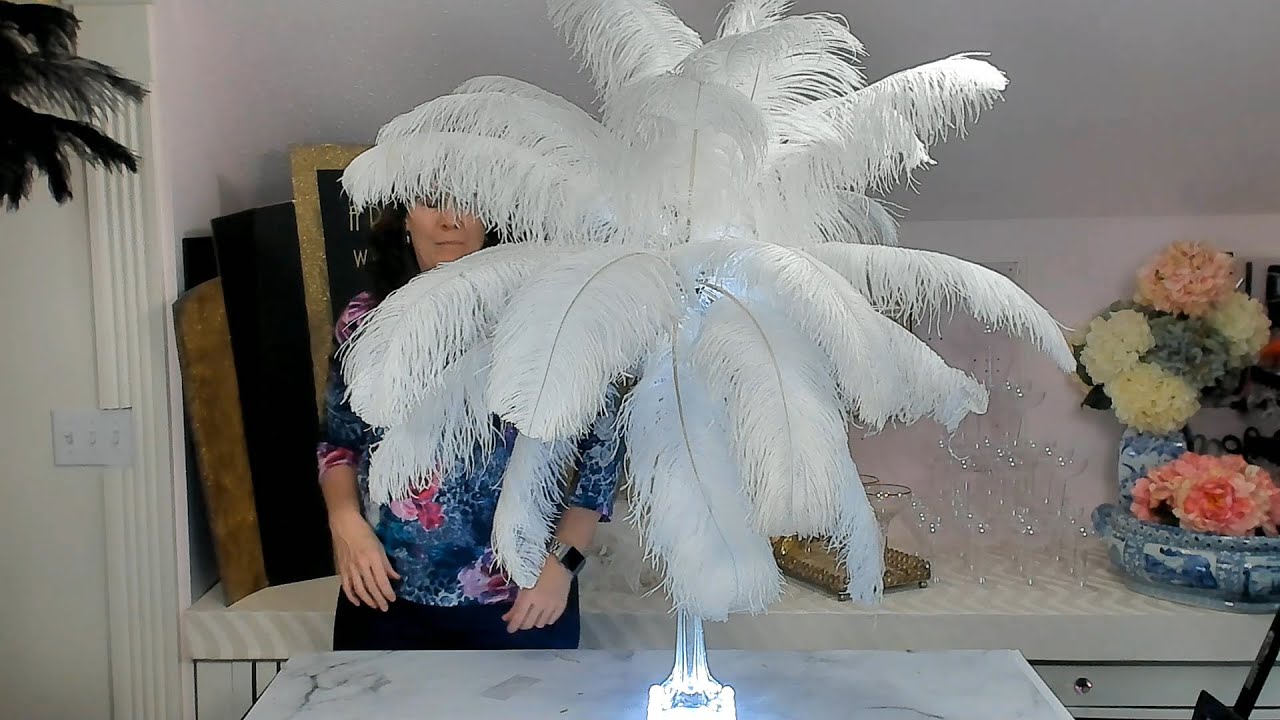


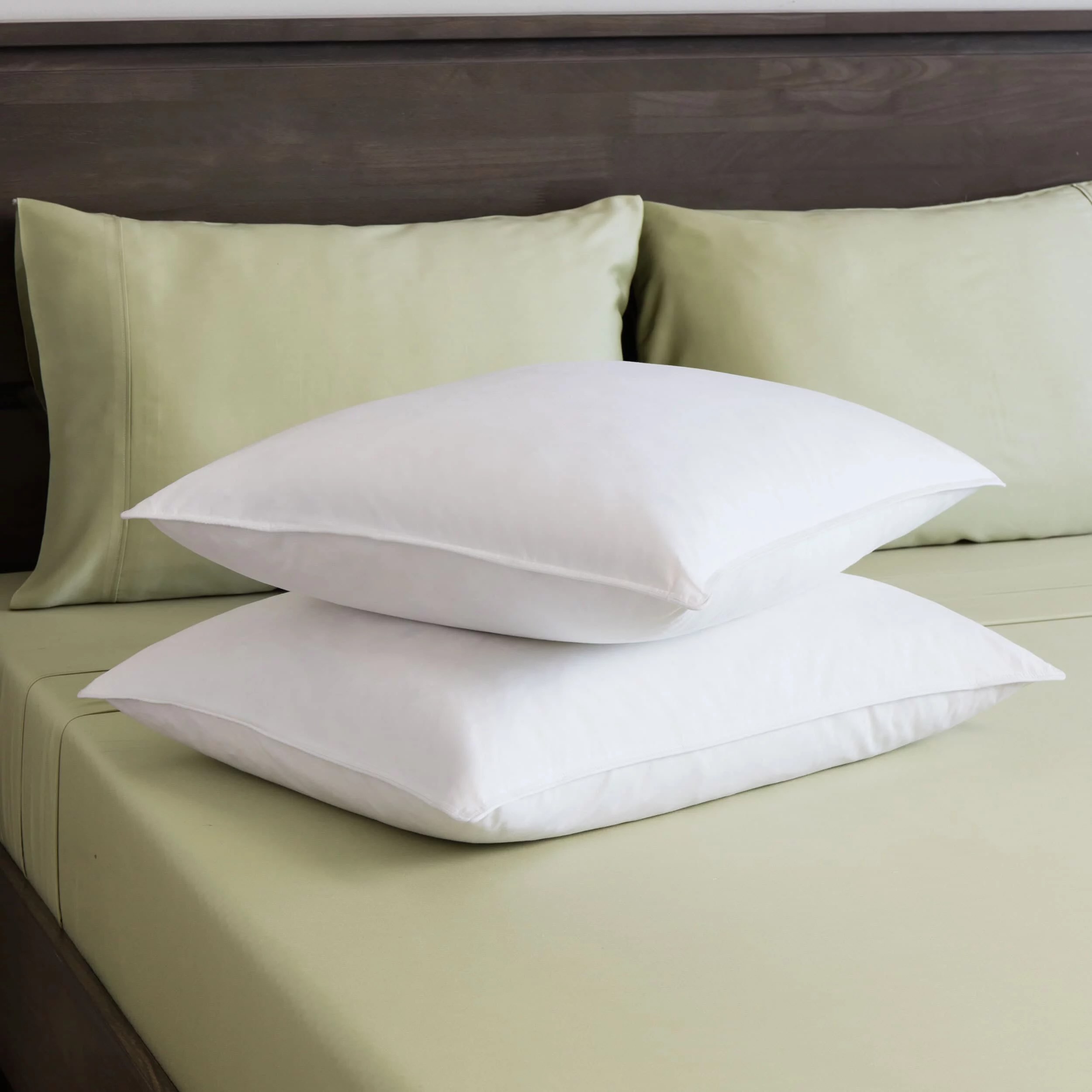
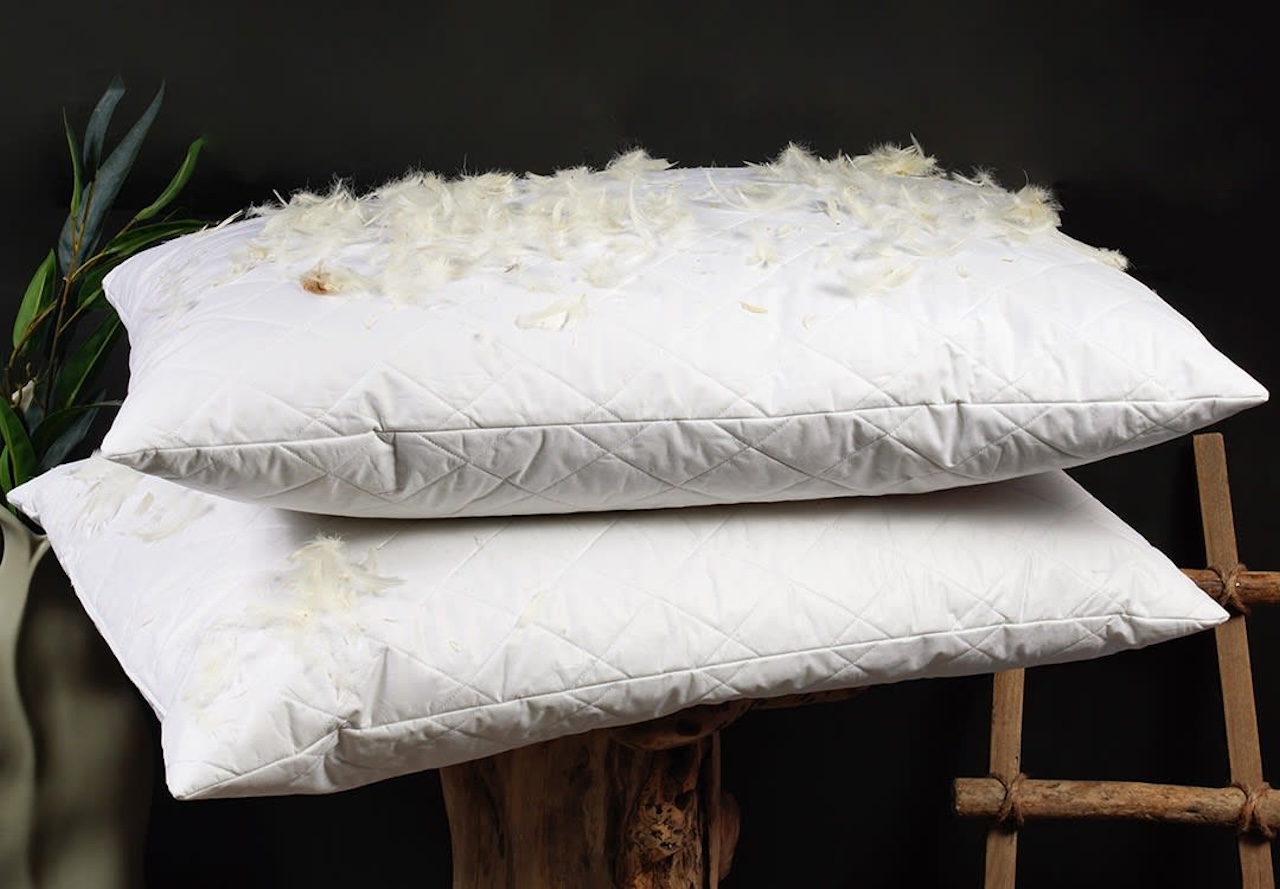
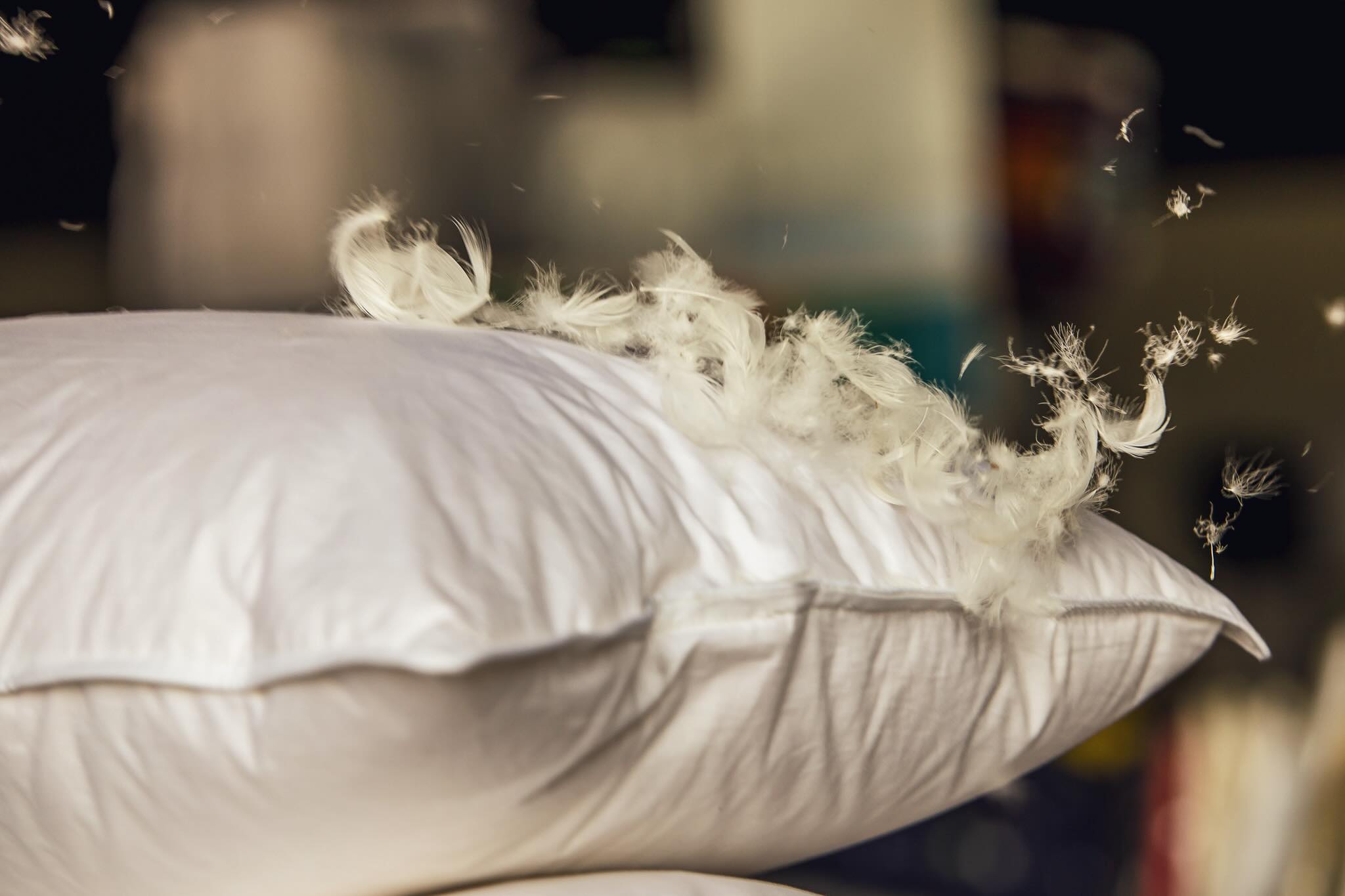
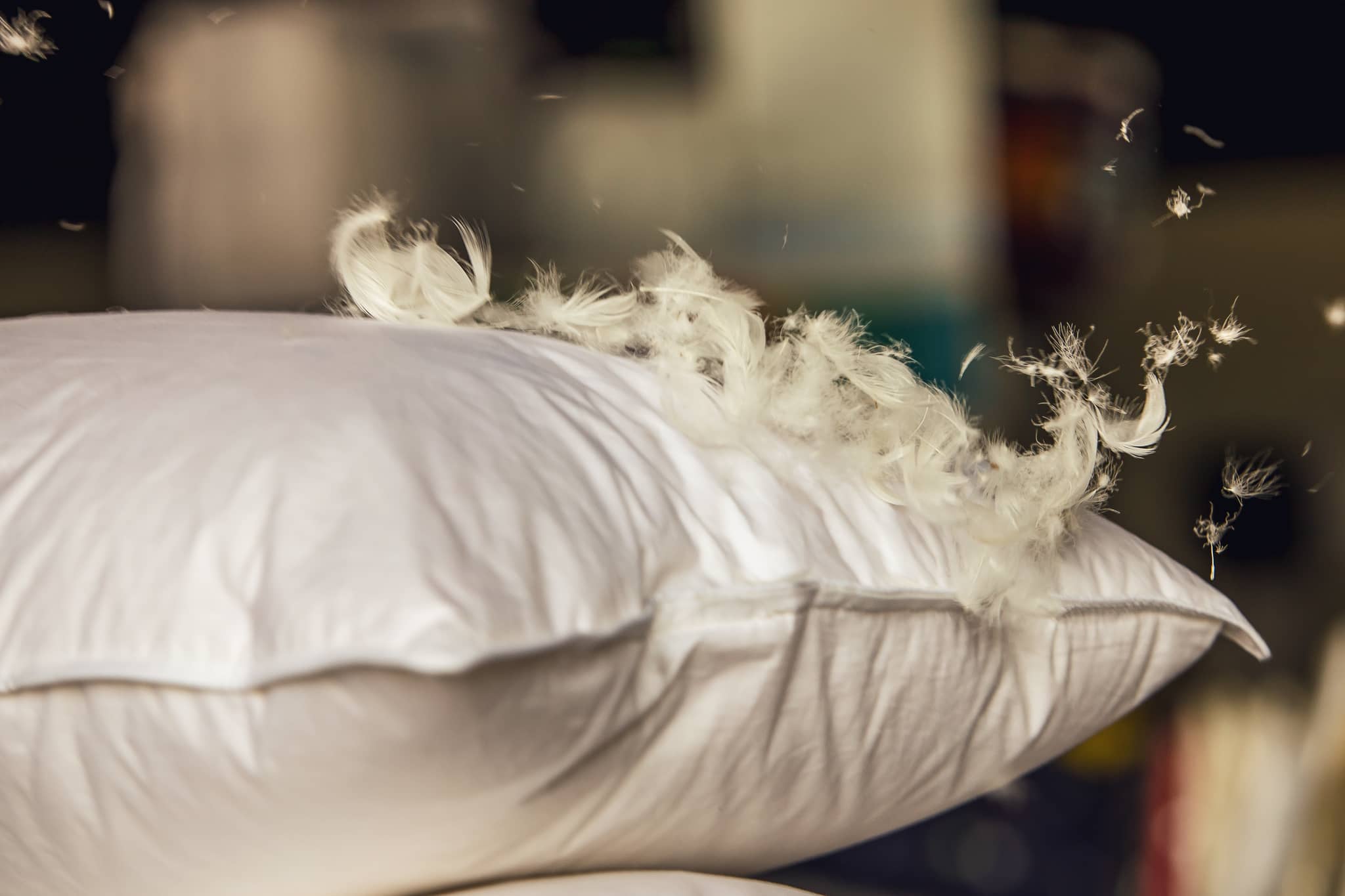
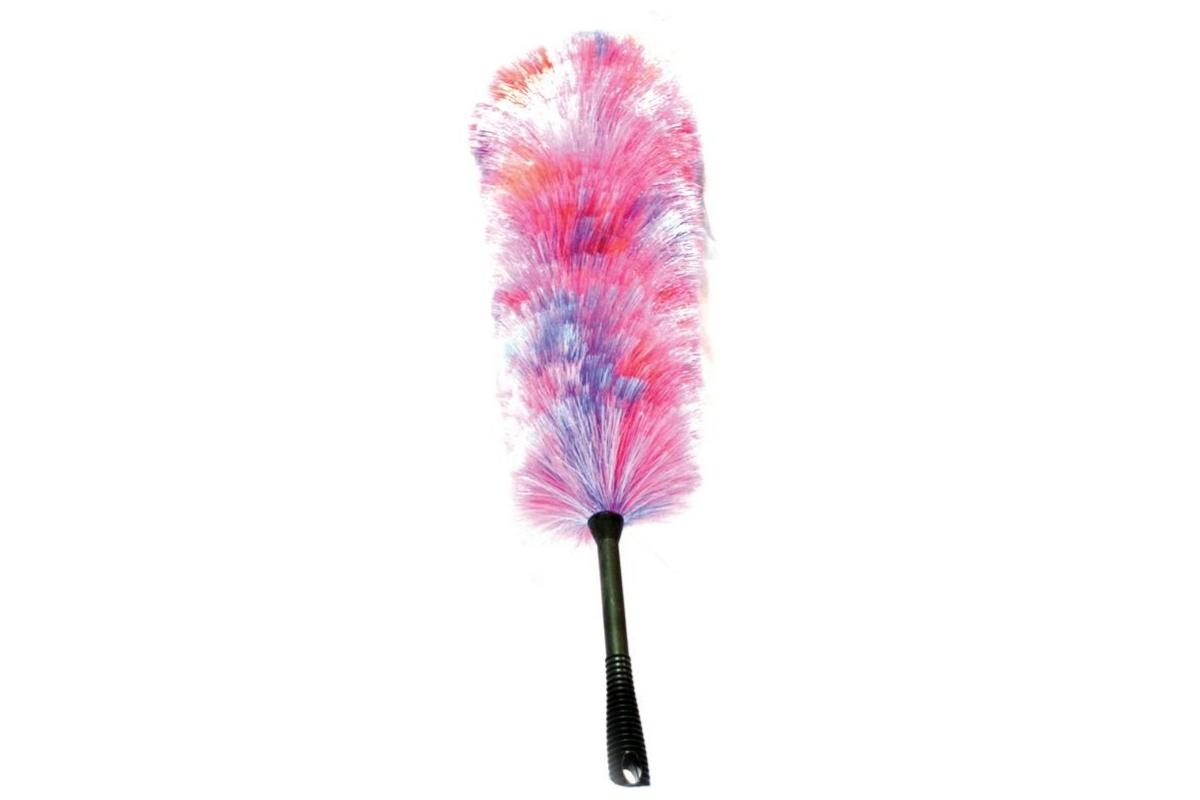

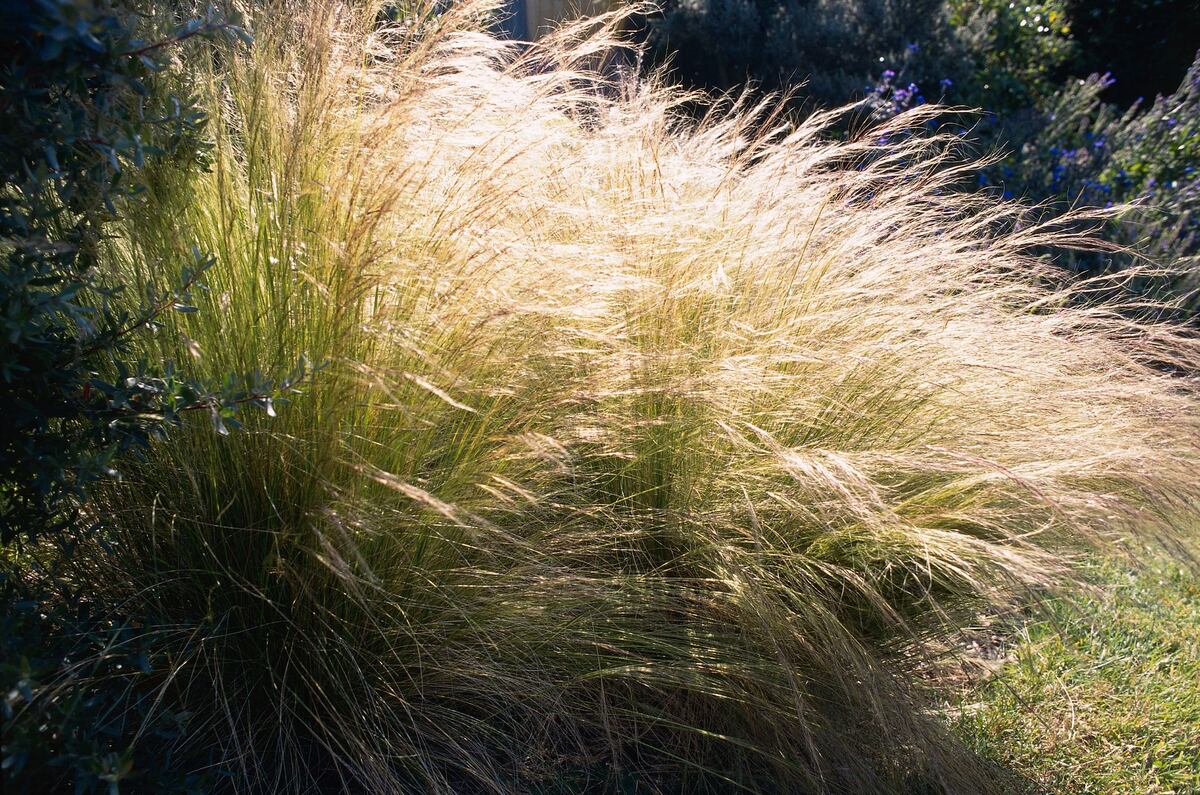
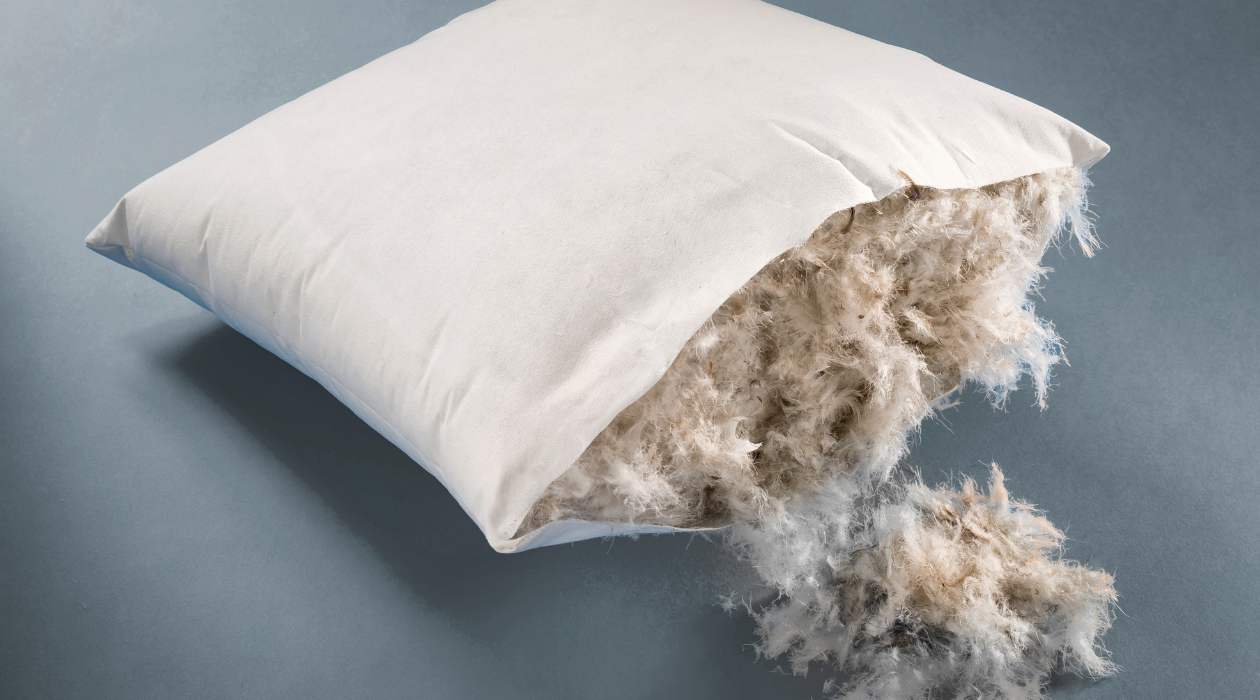

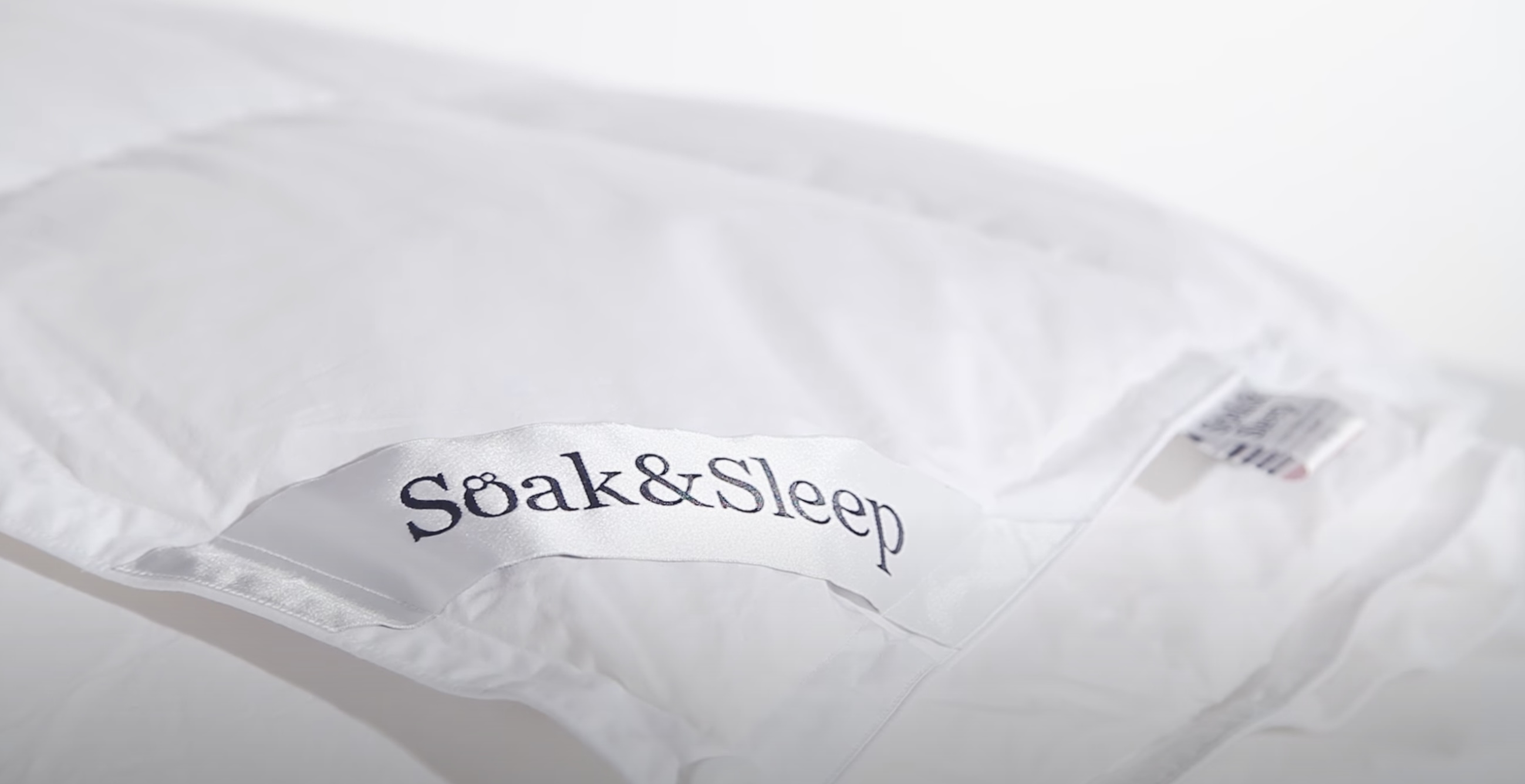

0 thoughts on “How To Store Feathers”